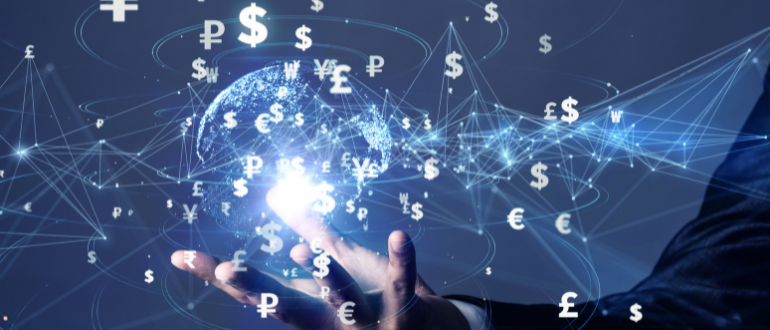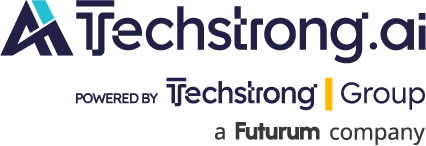
There’s no defying the laws of gravity.
I’ve been around long enough to know that.
Every few years someone comes along proclaiming “It’s a new paradigm!” or “This time it’s different!” or “The old rules don’t apply anymore!” I’ve heard them all — through dot-com, through subprime, through crypto, through NFTs. And every time, when the hype gets loud enough to drown out common sense, gravity quietly clears its throat.
Well, folks, I hear it clearing again.
Right now, AI is that shiny rocket everyone wants to strap themselves to. We’ve got a generation of technologists, investors, and policymakers who truly believe this thing only goes up. But here’s the uncomfortable truth: nothing only goes up.
The Numbers Don’t Lie
If you want to see just how inflated the AI economy has become, look at what’s driving growth in the United States right now.
According to JP Morgan Asset Management, almost half of U.S. GDP growth this year can be traced directly to AI and data-center spending. Not consumer spending, not exports, not productivity — infrastructure for AI. If you stripped that out, we’d likely be looking at something a lot closer to a recession.
That should stop us in our tracks. You can’t build a healthy economy on one sector — no matter how intelligent it sounds.
Writer Charles C. Mann captured it perfectly in a viral X post:
“Total AI capital expenditures in the U.S. are projected to exceed $500 billion in 2026 and 2027 — roughly the annual GDP of Singapore. But American consumers spend only $12 billion a year on AI services. That’s roughly the GDP of Somalia.”
That’s not just a gap; that’s a canyon between investment and adoption.
And my friend John Furrier over at The Cube put it in perspective:
“The difference between this and dot-com was that dot-com, everybody knows, was built on debt. This has been built on hyperscaler CapEx. But now, you’re starting to see the neoclouds build up a lot of debt… I think we are entering a bubble, and I think the bubble will burst — but God knows when. When people least expect it.”
He’s right. Whether it’s dot-com debt or hyperscaler CapEx, it’s still leverage chasing expectation. You can swap the buzzwords, but you can’t outsmart gravity.
If it keeps inflatin’, the bubble’s gonna burst
If it keeps inflatin’, the bubble’s gonna burstWhen the bubble bursts, man, somebody’s cash gets cursed
Mean ol’ market taught me to weep and moan, oh
It’s got what it takes to make a startup CEO lose sleepDon’t it make you feel bad, when your decks all slide to TBD?
Ain’t no Series B, VC ghosted meCryin’ won’t help you, pivot won’t do you no good
When the bubble bursts, brother, you gotta move
When It Pops
So what happens when the music stops?
If half of GDP growth is propped up by AI and data-center build-out, a slowdown there could ripple hard and fast. Construction crews, chip fabs, cooling-system manufacturers, power utilities — all the way down the stack.
When that bubble pops, the carnage won’t be confined to the tech sector. The entire financial ecosystem tied to AI — from GPU suppliers to specialized REITs — will feel it. Venture portfolios will shrink. Stock buybacks will slow. M&A pipelines will dry up.
And yet, this isn’t a eulogy. It’s a reset.
Just as the dot-com crash killed pets.com but gave us Amazon and Google, an AI correction will wash out the noise and leave behind the real builders. We’ll finally separate those who are actually solving problems from those who are just prompt-wrangling PowerPoint decks.
Because make no mistake: AI isn’t bad. It’s just ahead of itself.
The pace of investment has far outrun what current markets — or power grids — can realistically absorb. The hype cycle has compressed years of expected growth into a couple of quarters. Reality will need time to catch up.
Healthy Pain
Alan Greenspan called it “irrational exuberance.” I’d call it “spending tomorrow’s profits today.”
The coming contraction, when it arrives, will feel ugly. Some startups will vanish overnight. Stock charts will nosedive. Talking heads will panic. But beneath the noise, something healthier will start to take root: discipline.
We’ll begin to ask hard questions again:
- Does this AI product actually have users?
- Is there a business model behind the model?
- Can this data center run profitably without subsidies?
Sometimes gravity isn’t your enemy — it’s what keeps you grounded.
Shimmy’s Advice: How to Prepare for the Fall
You can’t stop the bubble from bursting, but you can land on your feet when it does. Here’s my take on how to brace for it.
1. Diversify Your Bets:
Don’t park every dollar—or every line of code—in AI. Spread your exposure across infrastructure, cybersecurity, automation, and even good old-fashioned software that still runs the world. Balance hype with cash flow.
2. Trim the Theater:
If you’re running “AI initiatives” that exist mostly for press releases, kill them. Focus on projects that deliver measurable value to customers or internal efficiency. The window-dressing days are over.
3. Preserve Liquidity:
In a correction, cash is king. Keep some dry powder — personally and organizationally. That optionality will let you buy talent, assets, or even companies at a fraction of today’s prices when the dust settles.
4. Invest in People, Not Just Models:
The companies that survive aren’t the ones with the biggest clusters; they’re the ones with adaptable teams who can use AI wisely. Train your people. Upskill them. Empower them.
5. Stay Curious, but Skeptical:
Keep exploring the frontier. Just don’t drink the Kool-Aid. Ask yourself: is this solving a real problem, or just chasing the next funding round?
Shimmy’s Take
I’m not rooting for pain — I’m rooting for sanity.
AI has already changed the world in remarkable ways. But hype has a half-life, and when it decays, what remains is value. The end of the bubble isn’t the end of the dream. It’s the start of a more grounded one.
When the bubble bursts—and it will—remember the blues refrain:
When the bubble bursts, you gotta move.
The trick isn’t to avoid gravity.
It’s to know when to come down safely.

